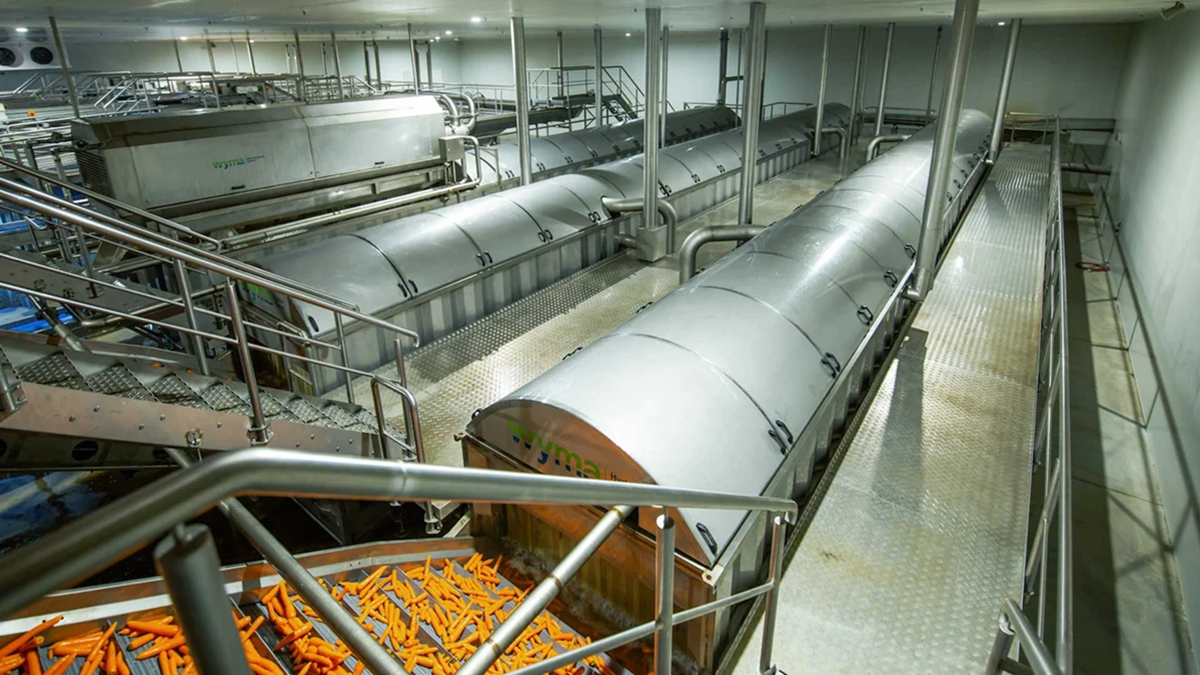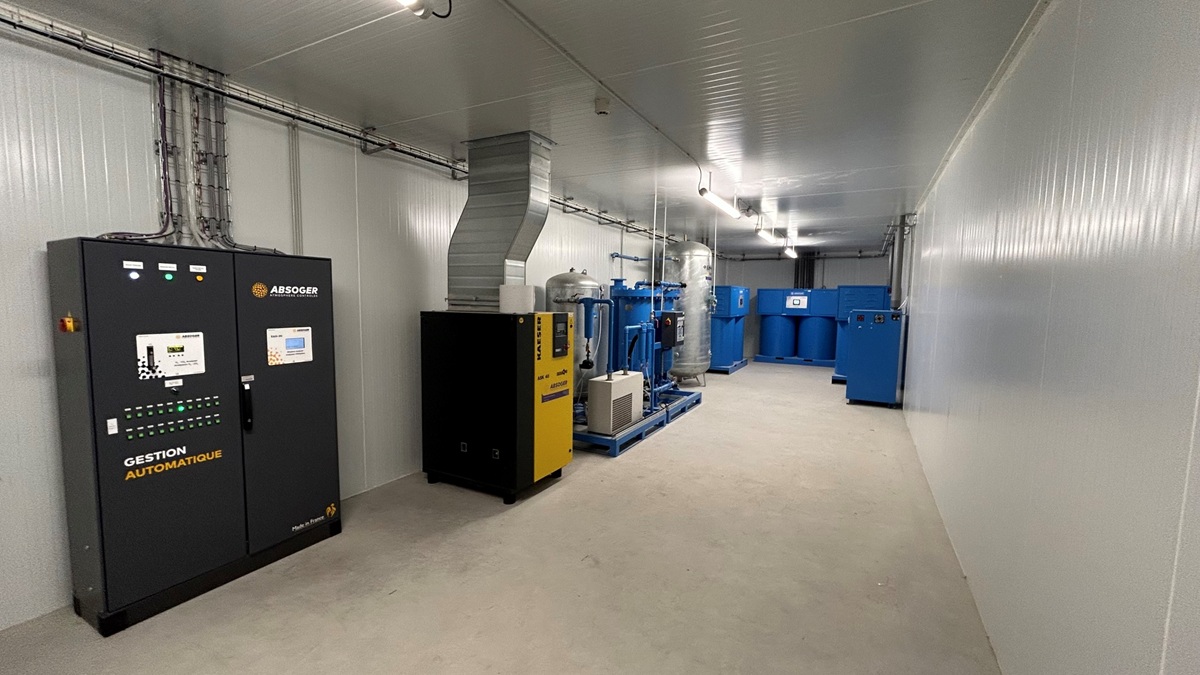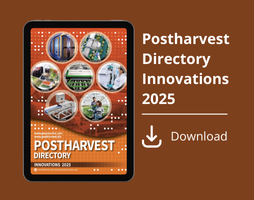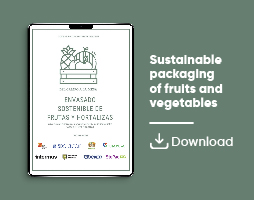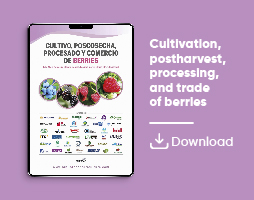News
Microgreens postharvest treatments as the relevant part of urban horticulture
"Microgreens as the future of urban horticulture and superfoods, supported by post-harvest innovations for shelf-life increase" by D. Barańska et al., is a comprehensive review of main aspects related to microgreen succesful growing and marketing, highlighting the importance of postharvest treatments
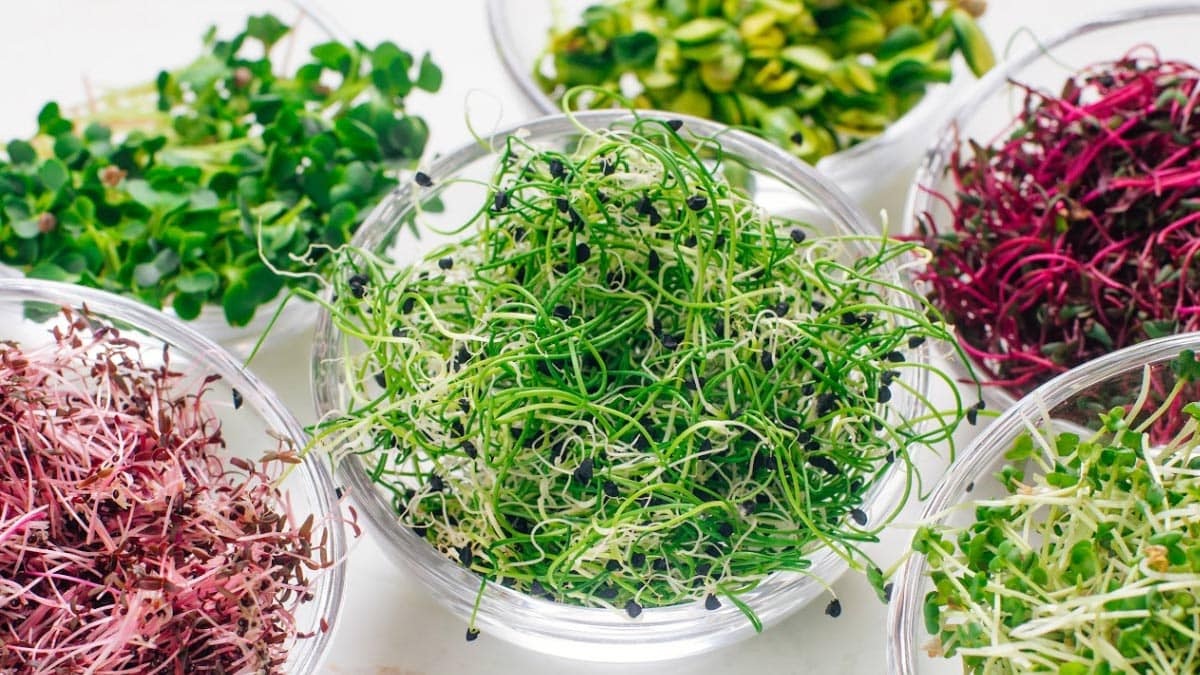
As the global population is projected to surge to 9.78 billion by 2064, urbanization and dietary shifts pose significant challenges to food security.
Positioned between sprouts and baby greens, microgreens – especially vegetable microgreens, boast rich bioactive compounds believed to combat chronic diseases.
As "superfoods," they've become culinary darlings, embraced by chefs for their flavors and nutritional punch. Their suitability for indoor farming, minimal cultivation resource requirements, and short production cycles make microgreens an ideal addition to functional foods in the era of global urbanization.
However, addressing their limited shelf-life and high sensitivity to abiotic stresses requires ongoing research.
This review presents the biochemical composition, health-promoting properties, and pre- and post-harvest strategies for enhancing the quality and shelf-life of microgreens, positioning them as an important addition to global diets and the functional food sector.
Additionally, it emphasizes the role of the microgreens' microbiome in boosting resistance to abiotic stresses and extending shelf-life, further enhancing their value and sustainability.
Ensuring consistent quality control measures will not only guarantee richness in flavor, texture, and nutritional content but also in shelf-life, resistance, and overall post-harvest quality of microgreens.
Understanding the interactions between microgreens and microorganisms holds the potential to develop innovative, environmentally friendly approaches to their cultivation and preservation.
Currently, there is a lack of literature on the holobiont approach of microgreens. Therefore, conducting research to increase knowledge about the role of metabolic, genetic, and morphological properties of selected microbe strains in shaping resistance to abiotic stresses and microgreens post-harvest quality is needed.
The text before is the Abstract of the paper
Introduction
In the upcoming years, the global population is anticipated to rise steadily, reaching a peak of 9.78 billion in 2064, followed by a decline to 8.88 billion by the century's end (Vollset et al., 2020).
Urbanization is expected to rise concurrently, with roughly two-thirds of the population predicted to reside in urban areas by the mid-century (Gnauer et al., 2020).
This scenario poses a massive challenge to ensuring a secure food supply, particularly in specific countries and large cities, thereby threatening global food security.
Hidden hunger
Moreover, the progressive global push for healthier eating is further complicated by micronutrient deficiency, commonly known as hidden hunger, impacting over two billion people, especially in developing nations, according to the World Health Organization (WHO).
The primary factors contributing to micronutrient deficiencies include limited dietary diversity resulting in monotonous diets, poor mineral bioavailability, increased susceptibility to illness and disease, and heightened physiological demands (Das and Dhar, 2023).
The potential of microgreens
In response to these challenges, the search for sustainable methods of vegetable production has intensified to reduce the carbon footprint while meeting the high nutritional needs of consumers, particularly in urban areas. Given the challenges above, the global microgreens market is experiencing growth due to their recognized health benefits and nutrient-rich characteristics.
Microgreens can contain more vitamins and bioactive compounds than their mature counterparts. They also exhibit anti-inflammatory, antioxidant, and cardiovascular health benefits.
Regular consumption of microgreens can help reduce LDL cholesterol levels, improve endothelial function, and overall body immunity. Their antibacterial and anticancer properties have been confirmed in vitro and in vivo studies, suggesting their potential in preventing and treating chronic diseases.
Microgreens can enhance the taste and texture of foods, potentially increasing the acceptance of healthy eating habits in society.
Microgreens, between sprouts and baby greens
Microgreens, situated between sprouts and baby greens in their growth stages, are cultivated from herb, vegetable, and grain seeds, representing the seedlings of edible plants with established roots.
They typically measure 5 to 10 cm in height, depending on the species (Jambor et al., 2022; Riggio et al., 2019) Sprouts are formed by immersing seeds and allowing them to sprout in a moist environment for about 5–7 days, potentially exposing them to temperatures and moisture levels ideal for the growth of bacteria and fungi, some of which can be harmful to humans due to toxin production such as aflatoxins.
What microgreens are
Microgreens, on the other hand, are young seedlings, whose seeds are soaked briefly in water, if at all, and they are harvested within 7–14 to 21 days, after the first true leaves appear (Riggio et al., 2019).
Microgreens production began in the late 1980s in California, and their popularity has steadily increased in recent years, driven by a growing interest in functional foods (Wojdyło et al., 2020).
Microgreens offer a wide variety of species, each with differences in germination rate, taste, and chemical composition.
Species
Seeds commonly utilized for microgreen cultivation belong to diverse plant families, including Amaranthaceae (amaranth, beet, quinoa), Amaryllidaceae (garlic, onion, leek), Apiaceae (parsley, carrot, fennel), Asteraceae (lettuce, radicchio, chicory), Boraginaceae (phacelia), Brassicaceae (arugula, broccoli, brussels, cabbage, cauliflower, chinese cabbage, collard, cress, daikon, kale, kohlrabi, komatsuna, mibuna, mizuna, mustard, pakchoi, peppercress, radish, rapini, rutabaga, tatsoi, turnip, wasabi, watercress), Convolvulaceae (water convolvulus), Cucurbitaceae (melon, cucumber, squash), Malvaceae (jute mallow/Nalta jute), Poaceae (corn, lemongrass), Lamiaceae (chia, basil), Leguminosae (chickpea, alfalfa, bean, pea), Onagraceae (evening primrose), and Portulacaceae (common purslane, moss-rose purslane) (Wojdyło et al., 2020; Alloggia et al., 2023).
Nevertheless, crops like tomatoes, peppers, eggplants, and others with seedling stages rich in antinutrients aren't ideal for microgreen cultivation.
On the other hand, while mature plants of legumes, grains, and sunflowers may not be edible, their seeds are recognized for their nutritional value, making their microgreens suitable for consumption (Du et al., 2022). Fig. 1 presents the increasing scientific level of interest in microgreens.
Rich array of bioactive substances
Often dubbed as superfoods, microgreens are praised for their rich array of bioactive substances such as flavonoids, hydroxycinnamic acids, vitamins (mainly ascorbic acid, tocopherol, folate, tocotrienols), β-carotene, betaxanthins, betacyanins, glucosinolates, minerals, carotenoids, lutein and zeaxanthin, anthocyanins, phenolic acids, fatty acids (α-linolenic acid, linolenic acid, palmitic acid & stearic acid, oleic acid, oxalic acid), polyphenols, phylloquinones, glucoraphanin, lutein, flavonoids, tocopherols, saponins, sugars, amino acids, and alkaloids (Bhaswant et al., 2023).
These compounds are believed to be essential in safeguarding the human body against various chronic conditions like cardiovascular diseases, diabetes, and cancer.
Furthermore, microgreens are characterized by a low caloric value (29–128 kcal 100 g-1) and a low glycemic index (Wojdyło et al., 2020; Altuner, 2021; Bhaswant te al., 2023; Dhaka et al., 2023; Das and Dhar, 2023; Tallei et al., 2024)
Microgreens in the gastronomy
Microgreens have captured the attention of consumers, particularly renowned chefs in high-end restaurants, who incorporate a variety of microgreens as embellishments to elevate the appeal of salads, soups, sandwiches, and other culinary creations. Incorporating various types of microgreens species can enhance both the visual presentation and the taste of a dish.
Beyond their appealing qualities, the utilization of microgreens has expanded to cater to the dietary preferences of a discerning consumer group.
Additionally, they are favored by vegans seeking nutrient-enriched, raw food options (Partap et al., 2023).
A limited shelf life
However, microgreens, when sold as fresh-cut products, have a limited shelf-life, typically lasting no >10–14 days. Due to the youthful nature of their tissues, fresh-cut microgreens exhibit high respiration rates, and their deterioration is more associated with stress-induced responses than their adult counterparts.
Various factors, including pre-harvest and post-harvest treatments, as well as different packaging materials and modified atmosphere packaging, have been examined as variables influencing the shelf-life of fresh-cut microgreens (Paradisoet al., 2018). Attributes and qualities of microgreens and mature plants are presented in Fig. 2 of the original paper. However, the information available in the literature on improving microgreens parameters is insufficient.
To improve the parameters of microgreens, such as quality, shelf-life, and safety, research on optimizing the production and storage conditions of microgreens cultivation is necessary.
The implementation of a universal handling system in this sector will help increase the availability of the product and reduce its price. To accomplish this objective, it is important to research the interactions between microgreens and microorganisms.
Microgreens,, an holobiont
Presently, there is a dearth of literature data on microgreens as a holobiont. At this stage, it is essential to define what a holobiont is and explain why understanding this concept is crucial for enhancing the efficiency of microgreens cultivation. The modern perspective views the multicellular host and its associated microbiota as a single functional unit, termed the "holobiont" (Hassani et al., 2018).
Microbiotas and their hosts interact in ways that influence the overall fitness of the holobiont, shaping its morphology, development, behavior, physiology, and disease resistance (Rosenberg and Zilber-Rosenberg, 2016). According to the state of the art, interactions with microorganisms can significantly improve the yield parameters, such as durability, quality, resistance, and shelf-life.
In this review, we present the current state of knowledge in biochemical composition, health-promoting properties, and techniques for improving the quality and resistance of microgreens, as well as the prospects for their improvement through coexistence with microorganisms within the plant holobiont.
Contents
(You can reach full content by clicking in the Source, below)
2. Why are microgreens a perfect pick for urban horticulture?
3. Health - promotion properties of microgreens
4. The difficulties of microgreens cultivation and storage - abiotic and biotic factors
5. Improving the quality and durability of microgreens: A physiological perspective
5.1. LED light
5.2. UV light
5.3. Photoperiod
5.4. Temperature
5.5. Biofortification and substrate properties
6. Exploring the holobiont perspective of microgreens
7. How microgreens’ microbiome can affect humans?
Conclusions: possible solutions and future prospects
Similar to any burgeoning field, microgreen cultivation faces specific challenges and offers opportunities for future improvements. Presently, microgreen cultivation lacks standardized procedures and quality control measures.
It is imperative to establish industry-wide standards covering seed selection, growing media, lighting, temperature, humidity, and nutrient management.
Ensuring consistent quality control measures will not only guarantee richness in flavor, texture, and nutritional content but also shelf-life, resistance, and overall post-harvest quality.
Although the literature provides some insights into improving microgreens' quality through interventions like light and temperature control and modified atmosphere packaging. These actions, while beneficial, are not sufficient to significantly increase their market availability and truly promote them as the brilliant superfood they are.
Currently, microgreens remain an exclusive product for many consumers due to their high prices and limited availability, particularly outside major cities.
To enhance the aforementioned parameters of microgreens, it is crucial to explore alternative methods to address the issue.
Interactions between plants and microorganisms are well-known to provide host plants with fitness advantages, including growth promotion, enhanced tolerance to both biotic and abiotic stresses, and strengthened disease resistance.
Understanding the interactions between microgreens and microorganisms holds the potential to develop innovative, environmentally friendly approaches to their cultivation and preservation. By optimizing the inherent interactions between plants and microorganisms, these solutions aim to elevate the quality, resilience, and durability of microgreens without relying on chemical or physical interventions.
Currently, there is a lack of literature on the holobiont approach of microgreens.
Therefore, researching to increase knowledge about the role of metabolic, genetic, and morphological properties of selected microbe strains in shaping resistance to abiotic stresses and post-harvest quality is justified. Utilizing omics technology, genetic engineering, and gene editing approaches will be beneficial in advancing research on this issue.
By integrating existing methods for microgreens enhancement with novel omics techniques and advancing our understanding of the microgreens microbiome, these petite plants have the potential to evolve into an outstanding and readily available source of vitality, which aligns seamlessly with contemporary challenges such as climate change, escalating urbanization, and the issue of hidden hunger.
In conclusion, microgreens, although so far underestimated, have the potential to settle permanently on our plates as a source of incredible health benefits, enriching our dining experiences with their captivating appearance and vibrant flavors.
Sources
Microgreens as the future of urban horticulture and superfoods, supported by post-harvest innovations for shelf-life increase: a review
Daria Barańska,Jacek Panek, Sylwia Różalska, Katarzyna Turnau & Magdalena Frąc
Scientia Horticulturae, Volume 350, August 2025, 114303
https://www.sciencedirect.com/science/article/pii/S0304423825003528
https://doi.org/10.1016/j.scienta.2025.114303
Picture, How to Grow Microgreens Indoors, https://empressofdirt.net/grow-microgreens/


